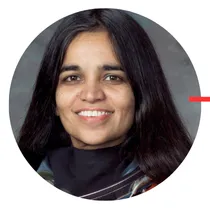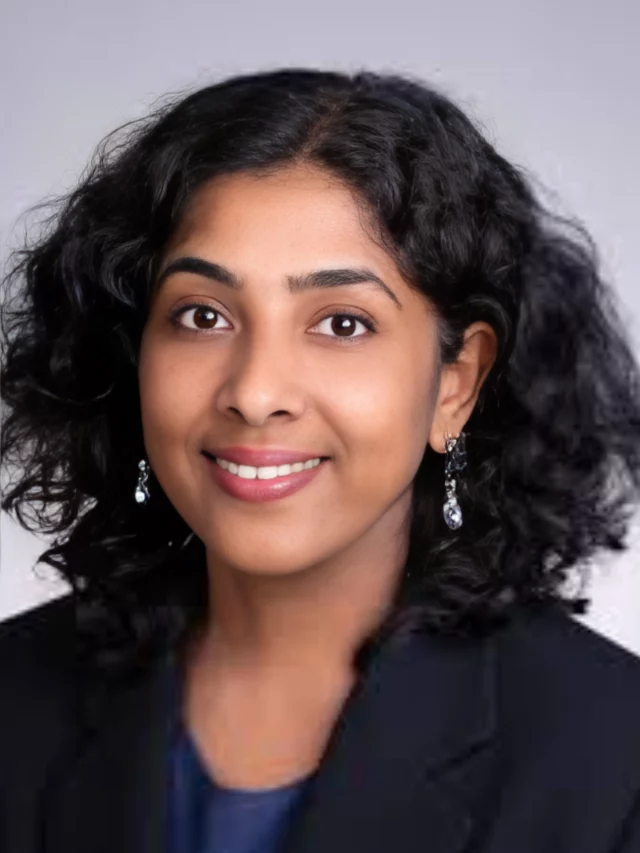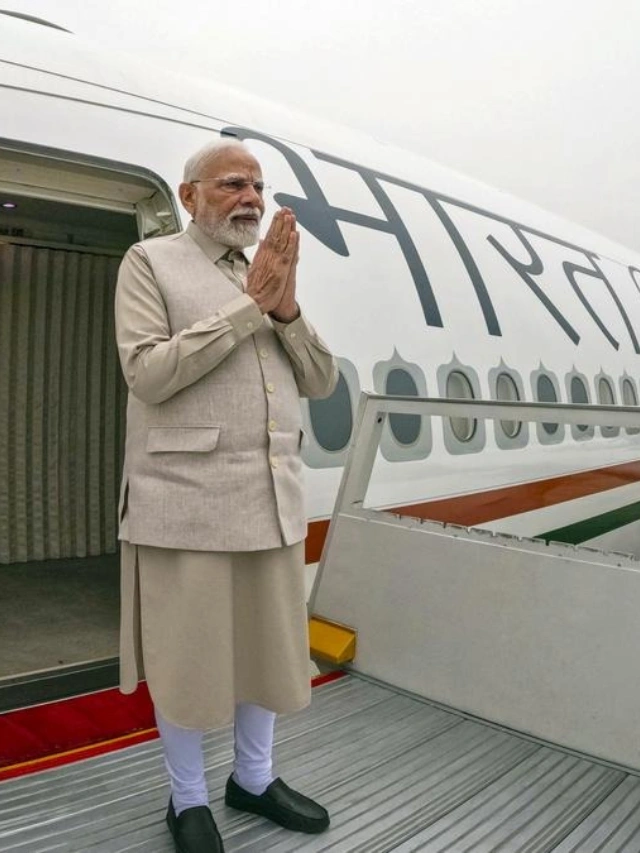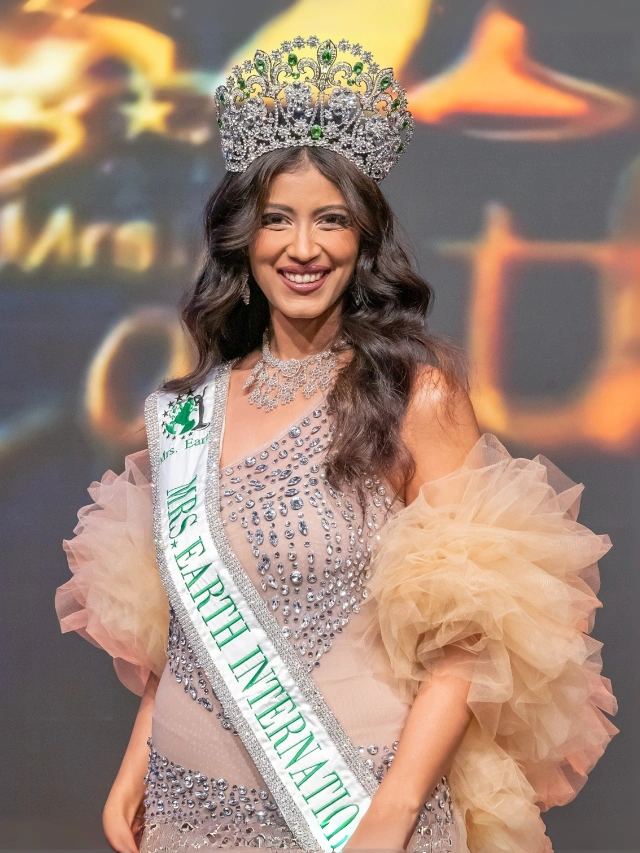Kalpana Chawla
Kalpana Chawla created history as the first woman of Indian origin to reach space aboard the Space Shuttle Columbia in 1997. She undertook the task as a mission specialist and robotic arm operator aboard STS-87.
Her remarkable achievements in space include 30 days, 14 hours, and 54 minutes at the time she ventured into the cosmos. She covered an incredible distance of 10.4 million miles across 252 orbits of Earth and spent more than 376 hours in space.
CEO’s | Actors | Politicians | Sports Stars
The astronaut’s second and final flight came in 2003 on STS-107, which turned out to be Columbia’s last mission. The crew worked in rotating shifts for 16 days and completed over 80 experiments that studied fire behavior, crystal formation and plant growth.
Her legacy in space exploration continues to inspire young women to pursue careers in science and aeronautics. The mission ended in tragedy when the shuttle disintegrated over Texas and Louisiana before it crashed to the ground.

Early Life and Education
Birth and heritage
Kalpana Chawla was born on March 17, 1962, in Karnal, a city in the northern Indian state of Haryana. Her family came from Gujranwala in West Punjab. They were Punjabi Hindus who moved to East Punjab as refugees during India’s Partition in 1947. This family’s story of migration shaped Kalpana’s early years and helped build the strength and determination that defined her later career.
Family background and early influences
Family composition: Kalpana was the youngest of four children in her family. She lived with her parents, Banarsi Lal Chawla and Sanjyothi Kharbanda, along with her siblings – sisters Sunita and Dipa, and brother Sanjay. Her father’s tire manufacturing plant provided a comfortable middle-class life that later supported her education.
Early naming: Her family lovingly called her “Montu” before she started school. She chose her own name – “Kalpana,” which means “idea” or “imagination” in Sanskrit. This choice showed the independent spirit that would guide her life’s path.
Parental expectations: Kalpana’s early interest in aerospace met some resistance from her father. He wanted her to become a doctor or teacher, saying that “only guys want to do aerospace engineering”. Her family eventually backed her unusual dreams and supported her passion to succeed in this male-dominated field.
Her fascination with flying as a child
First encounter with flight: A three-year-old Kalpana saw an airplane for the first time. This moment lit a spark that would shape her entire future. Her interest in flight grew from a child’s curiosity into a lifelong passion.
Local flying club visits: She often went to the local flying club with her father. These trips fed her growing love for aviation and aerospace. She watched aircraft for hours, gaining practical knowledge that would help her academic studies.
Childhood dreams: Young Kalpana brought her aviation dreams to life through art. She drew countless pictures of airplanes and imagined herself flying high above the clouds. Unlike most childhood dreams that fade away, her passion for aviation only grew stronger and guided her future choices.
Schooling in Karnal and early academic interests
Primary education: She studied at Tagore Baal Niketan Senior Secondary School in Karnal. Her 1976 graduation placed her “near the top of her class”. Teachers knew her as an exceptionally hard-working student who excelled in science.
Academic distinction: Space and flight captured her attention more than any other subjects. She went beyond textbook learning to question everything around her. Her understanding of aerodynamics and physics grew deeper with each passing year.
Pre-university education: After high school, she took steps toward her engineering goals. She spent 1977 at Kumari Vidyavati Anand DAV College for Women in Karnal. She also took simple engineering courses at Dayal Singh College in Karnal to build a strong foundation.
Engineering pathway: Karnal had no engineering college back then, so she moved to Chandigarh to study at Punjab Engineering College. This big move showed how committed she was to her aerospace dreams. She studied theoretical aerodynamics and earned her Aeronautical Engineering degree in 1982.
Pioneer status: She stood out as one of just four women in her engineering program. She became Punjab Engineering College’s first female student in aerospace engineering classes. This breakthrough achievement set the stage for her later success as the first woman of Indian origin in space, breaking gender barriers throughout her career.
Kalpana Chawla’s education and move to the U.S.
Bachelor’s degree in aeronautical engineering
Pioneering presence: Kalpana Chawla stood out at Punjab Engineering College in Chandigarh as one of just four women in the aeronautical engineering program. She became the first female student to take aerospace engineering classes at the college. This bold step showed her determination to follow her passion, no matter the gender barriers.
Academic excellence: Her undergraduate studies centered on theoretical aerodynamics. She built a strong foundation that would later boost her remarkable career. The year 1982 marked another milestone when she became the first woman to earn an aeronautical engineering degree from Punjab Engineering College.
Institutional discouragement: Her professors tried hard to discourage her from pursuing aeronautical engineering. They pointed to the limited opportunities for women in India’s aerospace sector. She stayed true to her belief that aerospace engineering was her true calling.
Pursuing higher studies in the United States
International aspirations: India lacked specialized courses in aerospace engineering at that time. Chawla made a life-changing decision to move to the United States in 1982 to further her education. Her father opposed this move.
First master’s degree: America welcomed Chawla as she enrolled at the University of Texas at Arlington (UTA). Hard work and dedication helped her earn her first Master of Science degree in Aerospace Engineering in 1984. Her thesis explored the “Optimization of cross flow fan housing for airplane wing installation”.
Doctoral pursuit: The University of Colorado Boulder became her next academic home. She earned a second Master’s degree in 1986 while working on her doctorate. Her academic path ended in 1988 with a PhD in aerospace engineering. Her thesis focused on “Computation of dynamics and control of unsteady vortical flows”.
Space ambitions: The University of Colorado Boulder years sparked her desire to join the space program. The stars would later become her workplace. She got her Private Pilot License during her doctoral studies. This combined her theoretical knowledge with hands-on flying experience.
Impressive credentials: Chawla’s educational journey left her with remarkable qualifications. She earned licenses to fly single and multi-engine land airplanes, single-engine seaplanes, and gliders. She also became a certified flight instructor. These achievements showed her mastery of aviation.
Kalpana Chawla’s husband and personal life
Meeting a kindred spirit: The University of Texas at Arlington brought Chawla together with Jean-Pierre Harrison, a French flying instructor and aviation author. Harrison worked as a pilot in Arlington. Their shared love for flying created a special bond between them.
Swift romance: After a year of knowing Harrison, Chawla knew he was the one. They married on December 2, 1983, in an intimate ceremony with close friends and family. She was still working on her first Master’s degree at the time.
Supportive partnership: The couple moved to Boulder after marriage where Chawla started her doctoral program. Harrison’s steadfast dedication to Chawla’s dreams never wavered. Their relationship grew stronger through mutual respect and shared interests, especially their passion for aviation and adventure.
Aviation enthusiasts: Flying brought the couple closer together. Harrison taught flying while Chawla improved her piloting skills. Their mutual love for aviation strengthened their relationship as they understood and encouraged each other’s dreams of flight.
Career before becoming an astronaut
Beginning of professional experience: Kalpana Chawla began her career at NASA’s Ames Research Center after completing her doctorate in 1988. This first step proved vital in her path to becoming an astronaut. Her position laid the groundwork for her space exploration achievements and helped her apply her academic knowledge to real-life aerospace challenges.
Work at NASA Ames Research Center
Research focus: Chawla specialized in powered-lift computational fluid dynamics at NASA Ames. This complex field studies air flows around aircraft during flight. She focused on simulating air flows that Harrier aircraft encounter in ‘ground-effect’ conditions. These conditions play a vital role in takeoff and landing aerodynamics.
Advanced research: After her original project, Chawla broadened her expertise to map flow solvers to parallel computers. She developed ways to use multiple computers at once to solve complex fluid flow problems. This showed her innovative approach to aerospace engineering’s computational challenges.
Testing methodologies: Chawla tested these advanced solvers through powered lift computations at Ames Research Center. She proved their effectiveness for aircraft design and performance analysis. Her work appeared in many technical papers and journals, which established her as an expert in computational aerodynamics.
Research at Overset Methods Inc.
Leadership role: Chawla took a big step in 1993 by joining Overset Methods Inc., a non-profit research organization in Los Altos, California. She became both Vice President and Research Scientist, which showed her technical and leadership skills in aerospace.
Team building: She built a specialized team at Overset Methods that focused on simulating moving multiple body problems. This complex study helps understand how different components interact during flight. Her team’s work showed she could solve challenging aerospace engineering problems through collaboration and innovation.
Technical contributions: She developed and implemented quick ways to perform aerodynamic optimization. This work helped improve aircraft design and performance, which advanced aerospace engineering. Her project results appeared in technical conference papers and journals, which strengthened her reputation.
Becoming a U.S. citizen and applying to NASA
Naturalization: Chawla became a naturalized United States citizen in April 1991. This step was vital for her main goal – joining NASA’s astronaut corps and going to space.
Aviation credentials: She built impressive aviation credentials throughout her career. She earned her Certified Flight Instructor rating for airplanes and gliders. She also got Commercial Pilot licenses for single and multi-engine airplanes, seaplanes, and gliders. These qualifications showed her complete mastery of aviation beyond theory.
NASA selection: Chawla applied to the NASA astronaut corps after becoming a respected aerospace researcher and U.S. citizen. NASA selected her in December 1994 as part of the 15th Group of Astronauts. This achievement brought her closer to her childhood dream of space exploration.
Astronaut training: She reported to Johnson Space Center in March 1995 to start her astronaut candidate training. After a tough year of training and evaluation, she worked as crew representative on technical issues for the Astronaut Office’s EVA/Robotics and Computer Branches. She used her expertise to prepare for future space missions while waiting for her first flight assignment.
Kalpana Chawla’s space missions
Historic achievement: Kalpana Chawla’s space experience began on November 19, 1997. She made history as the first woman of Indian origin to reach space aboard Space Shuttle Columbia’s STS-87 mission.
First mission: STS-87 and the Spartan satellite
Mission responsibilities: She served as the prime robotic arm operator and had to deploy the Spartan satellite during STS-87 to study the sun’s outer layers.
Unexpected challenge: The Spartan deployment faced a problem when the satellite failed to complete its planned pirouette maneuver. Chawla tried to catch the satellite with the robotic arm but struggled to confirm a secure grip.
Recovery operation: The Spartan started spinning at about two degrees per second after Chawla released the arm. Commander Kregel tried to match this rotation with Columbia’s thrusters. Mission control decided a spacewalk would be needed to retrieve the satellite.
Mission completion: The STS-87 completed its 16-day mission successfully. Chawla covered 10.4 million miles in 252 orbits of Earth and spent over 376 hours in space.
Second mission: STS-107 and scientific experiments
Return to Columbia: Mission control selected Chawla in July 2000. She went back to space aboard Columbia for mission STS-107, which launched on January 16, 2003, after several delays.
Scientific focus. The crew worked around the clock in alternating shifts during this research-intensive mission. Chawla worked on the Red Team with Commander Rick Husband, Laurel Clark, and Ilan Ramon.
Experimental breadth: The crew ran over 80 experiments in fields like astroculture, crystal growth, combustion science, and studies on granular materials during their 16-day mission.
Kalpana Chawla death and the Columbia disaster
Fatal reentry: Columbia’s descent through Earth’s atmosphere turned tragic on February 1, 2003. The shuttle broke apart over Texas and Louisiana at about 9:00 a.m. EST.
Catastrophic damage: A piece of insulating foam broke off from the external fuel tank during launch and hit the left wing’s thermal protection system. Superheated atmospheric gasses penetrated the wing during reentry because of this damage.
Tragic conclusion: Columbia started breaking apart at an altitude of 60 km (40 miles) at approximately 9:00:18. All seven crew members, including Chawla, lost their lives.
Final moments: The crew faced cabin depressurization first. They couldn’t close their helmet visors fast enough, which showed how quickly the depressurization happened.
Legacy and awards won by Kalpana Chawla
Legacy of a Star Voyager
Kalpana Chawla’s remarkable rise from a small town in Haryana to space shows what human determination and courage can achieve. She loved flying since childhood and broke through many barriers. She became one of the few women to study aeronautical engineering in India. Later, she excelled as a researcher in the United States and became the first woman of Indian origin to go beyond Earth’s atmosphere. She showed amazing resilience through it all. Traditional expectations and institutional barriers couldn’t stop her from chasing her dreams among the stars.
Impact on Future Generations
The 2003 Columbia tragedy took her life, but Chawla’s legacy grows stronger each day. She motivates young women, especially from India and South Asian communities, to build careers in aerospace, engineering, and other male-dominated STEM fields. NASA honored her memory with a supercomputer in 2004. Streets, scholarships, and institutions in India and the United States now carry her name. The International Astronomical Union named a hill on Venus “Chawla Colles.” Her name will forever shine among the stars she cherished.
Scientific Contributions
Chawla wasn’t just a symbol – she was a brilliant scientist. Her innovative work in computational fluid dynamics at NASA Ames Research Center and Overset Methods changed how we understand aircraft aerodynamics. She helped conduct more than 80 experiments during her two space missions. These studies expanded our knowledge in combustion science, crystal growth, and astroculture. The Columbia disaster often overshadows these scientific achievements, but they remain vital to her professional legacy.
The Human Behind the Hero
People close to Chawla remember qualities that went beyond her professional success. Her husband Jean-Pierre Harrison and colleagues often talk about her incredible work ethic and pure joy for space exploration. She never gave up. Despite her achievements, she stayed humble and gracefully accepted her role model status. These personal traits, combined with her brilliant mind, made her more than just an accomplished astronaut – she was truly inspiring.
Final Reflections
Chawla lived just 40 years, but she showed us what humans can achieve. A child who watched planes in Karnal became an astronaut floating among stars. Her story proves that dreams backed by determination and education can break any barrier. The Columbia disaster took her life, but her spirit of exploration lives in everyone who looks up at the night sky with wonder. As Chawla herself once said, “The path from dreams to success exists. May you have the vision to find it, the courage to get on to it, and the perseverance to follow it.”

Read a similar story of Gitanjali Rao, young inventor and scientist.
FAQ
How did Kalpana Chawla die?
On February 1, 2003, during her second space mission aboard the Space Shuttle Columbia (STS-107), Kalpana Chawla tragically lost her life. The shuttle disintegrated upon re-entry into Earth’s atmosphere over Texas, resulting in the death of all seven crew members. The disaster was caused by damage sustained during launch when a piece of insulating foam struck the left wing, compromising the shuttle’s thermal protection system. This breach allowed hot atmospheric gases to penetrate the wing upon re-entry, leading to the orbiter’s destruction.
What is a brief biography of Kalpana Chawla?
Kalpana Chawla was born on March 17, 1962, in Karnal, Haryana, India. She earned a Bachelor of Engineering in Aeronautical Engineering from Punjab Engineering College, Chandigarh. Pursuing further studies in the United States, she obtained a Master of Science from the University of Texas at Arlington and a Ph.D. in Aerospace Engineering from the University of Colorado Boulder. In 1988, Chawla joined NASA as a research scientist and became an astronaut in 1994. She flew her first mission on Space Shuttle Columbia in 1997 and her second in 2003, during which she perished in the Columbia disaster.
What was Kalpana Chawla's educational background?
Kalpana Chawla’s passion for aviation led her to pursue a Bachelor of Engineering in Aeronautical Engineering from Punjab Engineering College in Chandigarh, India. She then moved to the United States, earning a Master of Science in Aerospace Engineering from the University of Texas at Arlington in 1984. Continuing her academic journey, she obtained a Ph.D. in Aerospace Engineering from the University of Colorado Boulder in 1988. Her extensive education laid the foundation for her illustrious career as an astronaut and researcher.
Who were Kalpana Chawla's family members?
Kalpana Chawla was born to Banarasi Lal Chawla and Sanjyothi Chawla in Karnal, Haryana, India. She was the youngest of four siblings, with two elder sisters, Sunita and Deepa, and an elder brother, Sanjay. Her family supported her ambitions, despite societal norms, encouraging her pursuit of aerospace engineering and her dreams of space exploration.
Who was Kalpana Chawla's husband?
Kalpana Chawla was married to Jean-Pierre Harrison, a flying instructor and aviation author. The couple met during her time at the University of Texas at Arlington and married on December 2, 1983. Harrison supported Chawla’s aspirations and career, and they shared a mutual passion for flying and aerospace.
What was Kalpana Chawla's date of birth?
Kalpana Chawla was born on March 17, 1962. However, for school admission purposes, her official date of birth was recorded as July 1, 1961. Despite the discrepancy, March 17, 1962, is widely recognized as her birthdate.
Where was Kalpana Chawla born?
Kalpana Chawla was born in Karnal, a city in the northern Indian state of Haryana. Karnal is known for its rich history and has been a significant center for education and research, which likely influenced Chawla’s early interests in aviation and space exploration.
What were Kalpana Chawla's major achievements?
Kalpana Chawla achieved several significant milestones in her career. She became the first woman of Indian origin to travel to space, flying on Space Shuttle Columbia in 1997 as a mission specialist and primary robotic arm operator. During this mission, she logged over 376 hours in space. Her dedication to space exploration and her pioneering spirit have inspired countless individuals worldwide to pursue careers in science and engineering.
What was Kalpana Chawla's first space mission?
Kalpana Chawla’s inaugural spaceflight was aboard Space Shuttle Columbia on mission STS-87, which launched on November 19, 1997. Serving as a mission specialist and robotic arm operator, she was responsible for deploying the Spartan satellite. Despite challenges during the mission, Chawla and her crew conducted various scientific experiments, contributing valuable data to microgravity studies. This mission marked her as the first woman of Indian descent to journey into space.
What was Kalpana Chawla's childhood like?
Growing up in Karnal, Haryana, Kalpana Chawla exhibited a keen interest in aviation and space from a young age. She was known for her curiosity and determination, often engaging in activities that defied traditional gender roles. Her early education at Tagore Baal Niketan Senior Secondary School laid the foundation for her future pursuits. Encouraged by her family, she aspired to reach the skies, a dream she realized through her dedication to aerospace engineering and space exploration.




